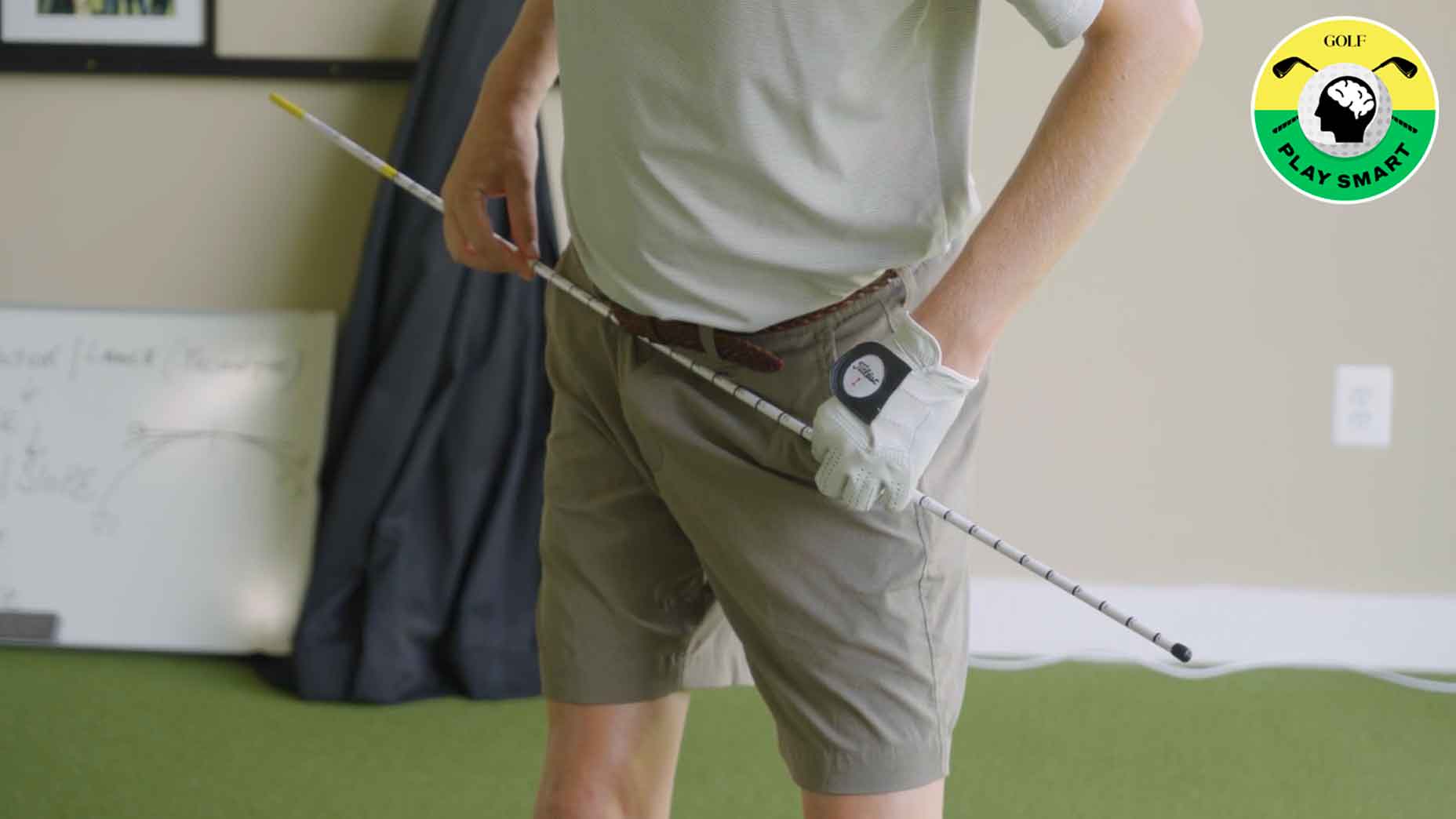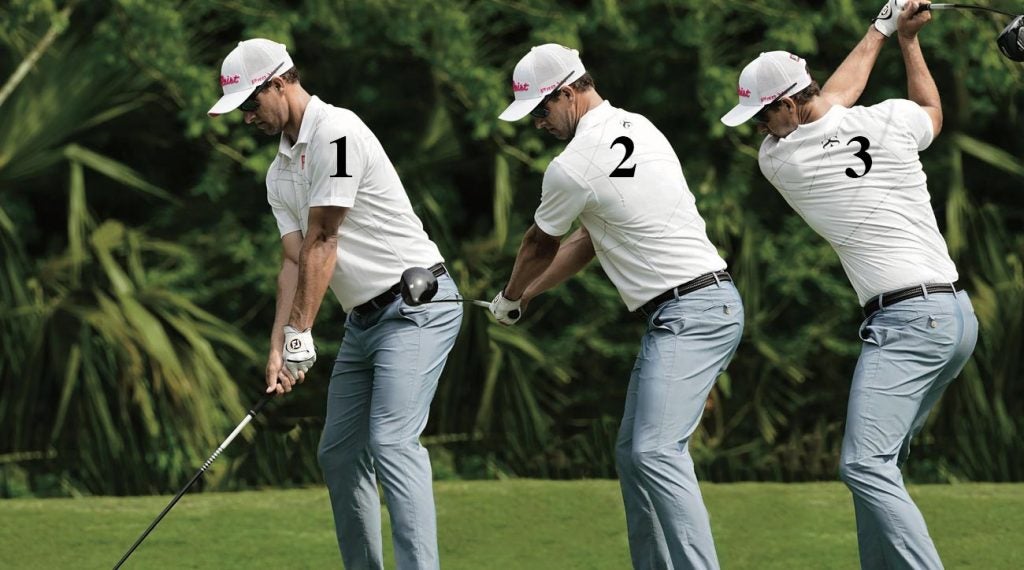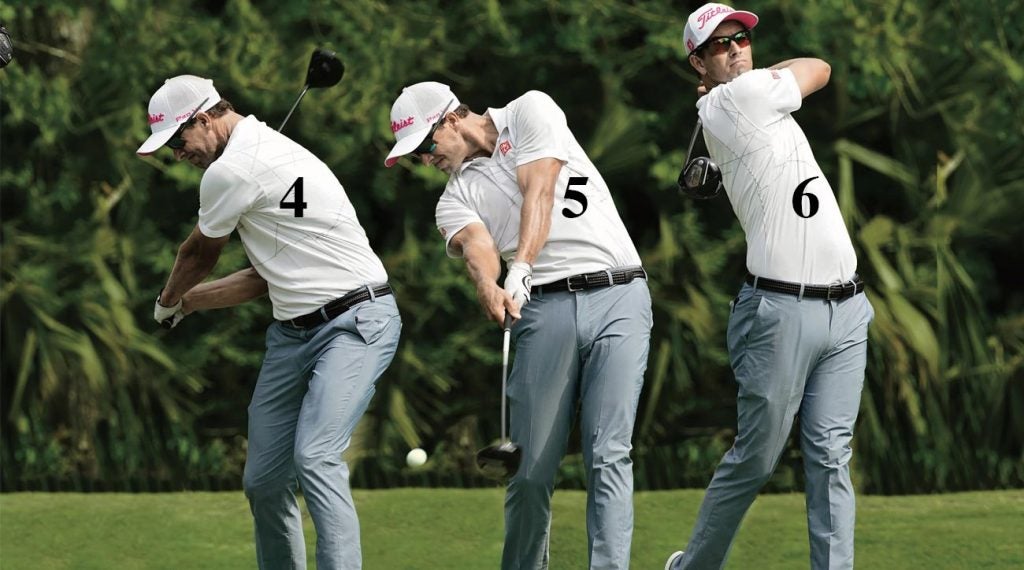 This tweak effortlessly produces more hip turn (& longer drives)
This tweak effortlessly produces more hip turn (& longer drives)
Six ways to copy Adam Scott’s biomechanically-perfect golf swing

Who doesn’t like Adam Scott’s swing? It’s a technical marvel that utilizes ground forces to the max (hence his near-300-yard driving average at age 39) and great synchronization. It’s dripping with rhythm and tempo — some of the best you’ll ever see. It’s pleasing to the eye and biomechanically efficient. No wonder pundits and fans alike cite it as the most enviable motion in the game today.
Are there flaws? Sure — every player fights his or her own perceived deficiencies, but with Scott, they’re minor. What’s truly amazing is how well Scott’s swing has held up over time — it’s basically the same shape and only slightly faster than when he hit the pro ranks some 20 years ago.
Scott’s coach, Brad Malone, used to teach with me, before he started working with Scott. Even then, we’d quiz each other: “What would you change in Adam Scott’s swing?” Some of the things we talked about actually made their way into Scott’s motion with Brad’s help, such as making his spine less rigid at address. (It’s tough enough to start from a static position, let alone a rigid one.) There are dozens of good takeaways from Scott’s swing. I list a few above. Adding even one to your motion is sure to help. My suggestion: Add them all.

ADVERTISEMENT
1. Address
Very solid, yet Scott tends to set his eyes and head too high — you’ll often see him bring his eyes down at the last minute, which softens and rounds out his spine. The result is less tension and a smoother start to his swing.
2. Start
Scott’s body resists as he pulls his left arm away, creating excellent width and torque. A lot of recreational golfers do the opposite, turning their body from the get-go. Copy Scott: Get the club and your arms moving first, then add turn.
3. Wind Up
Now the big muscles! Scott winds up his trunk and torso, which carries his arms to the top. He’s lost a little forward bend here, a minor quibble, but definitely something he keeps his eyes on. You should, too.

4. Transition
This is Scott’s best move: flexing his knees and increasing his forward bend as he swings down from the top. Copy this! Also, note how his arms have worked nearly straight down. They’re active. You can’t simply “pin” them to your chest and expect good things to happen.
5. Impact
Vertical forces come into play now as Scott extends his left side. This “jump” is fueled by the energy he pushed into the ground in frame 4. Key: His left foot is planted into the ground, maximizing the jump. Little things like this make a big difference.
6. Strong
A beautiful balanced finish, the product of great sequencing and Scott’s natural athleticism. Copy the way Scott has rotated his chest way past the target line. You’ll not only ramp up ball speed, you’ll look nearly as cool as Scott while doing it.
To receive GOLF’s all-new newsletters, subscribe for free here.
ADVERTISEMENT







